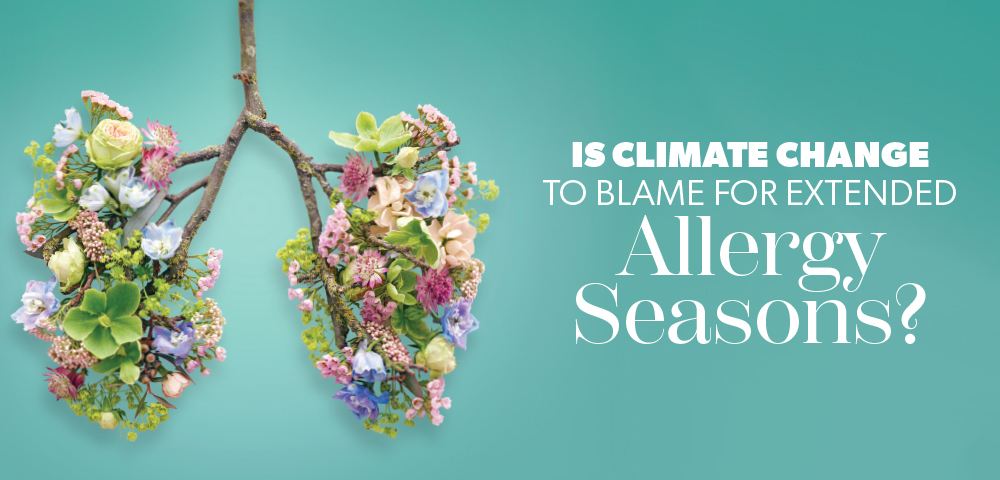
The straight answer is yes. The length and intensity of pollen seasons are growing, and it’s largely because of a warming planet.
A recent study found that, across the u.s. and canada, pollen season starts about 20 days earlier, and pollen loads are about 21% higher since 1990. for the one in five of us who deal with seasonal allergies, this news is not good.
It’s all happening because plants need carbon dioxide to grow, and with greater emissions of CO2 entering the atmosphere, plants begin their flowering stage earlier and stay there longer. Airborne pollen levels subsequently rise in the air and lead to major health impacts, from nagging nasal drip and itchy eyes to more serious upper respiratory tract and lung complications.
Asthma is a respiratory condition that seasonal allergies tend to make worse. Allergy-induced asthma is very common and is typically managed with inhaled corticosteroids. Although necessary in many cases, there is a current initiative to look at preventative measures to support asthma symptoms, especially when it comes to allergies. The main reason is because common asthma inhalers – both metered dose inhalers (MDIs) and dry powder inhalers (DPIs) – have significant impacts on the health of the planet. In fact, the use of one MDI is equivalent to a 290 km journey in a gasoline-powered vehicle, while the packaging of DPIs causes substantial marine ecotoxicity. Aside from asthma inhalers, pharmaceuticals, in general, represent 25% of total life cycle health care greenhouse gas (GHG) emissions, making it the largest expenditure category by emissions, ahead of hospitals.
The use of one MDI is equivalent to a 290 km JOURNEY in a GASOLINE- POWERED VEHICLE
So, when looking toward the upcoming allergy season, try to look through a preventative lens rather than one full of misery. There are clinically proven effective preventative treatment options that are both climate-friendly and void of other common side effects seen in many allergy medications like inhalers and antihistamines. One particular superstar is the bioflavonoid quercetin.
Quercetin is naturally present in apples and onions and is known for its ability to support the balance of T-helper cells and antigen-specific antibodies, stabilize the cell membranes of mast cells (influential immune cells involved in the development of allergic responses), and inhibit the production and release of histamine. You likely know histamine for its ability to make you sneeze, feel congested, have burning eyes, and create mucus that runs and runs and runs. Quercetin’s immune-modulating and anti-inflammatory actions contribute to its usefulness against allergic rhinitis, seasonal allergies, and other allergic responses.
But not all supplements are created equal, and in fact, quercetin is very difficult to absorb from food or supplements, largely because it is fat soluble. This means that the clinical efficacy of quercetin is very limited unless you take a form that has been optimized for absorption. When choosing an allergy-relieving quercetin supplement, look for the LipoMicel form. LipoMicel quercetin is more absorbable, meaning you need to take ten times less to feel the health benefits.
Incorporating quercetin into your daily routine a week or two before allergy season starts can be an effective way to help prevent and relieve allergy symptoms. You will also become a climate advocate by choosing to reduce your allergy symptoms naturally and not contribute to GHG emissions. So put your tissue box away and get out in the garden this spring with optimized quercetin!
In closing, speaking to your health care practitioner before starting, stopping, or changing your prescribed medications is essential.












